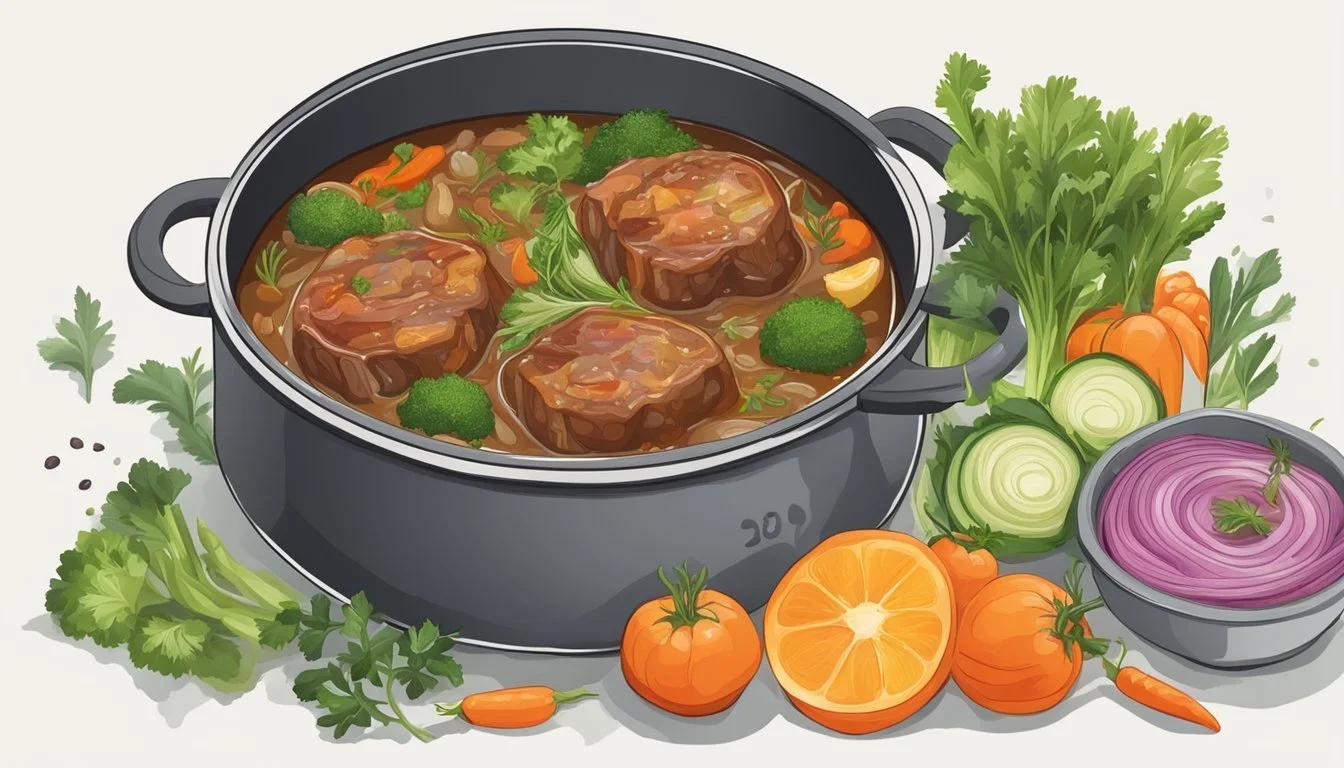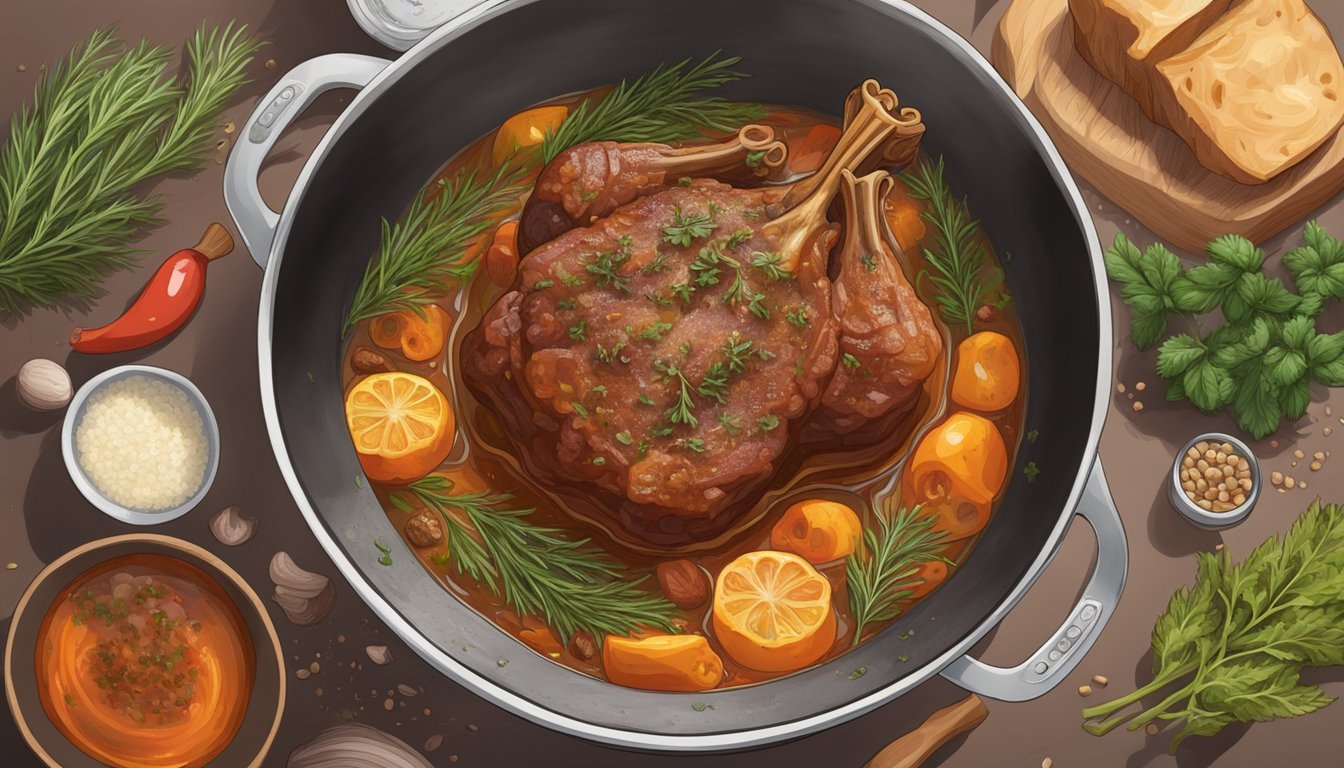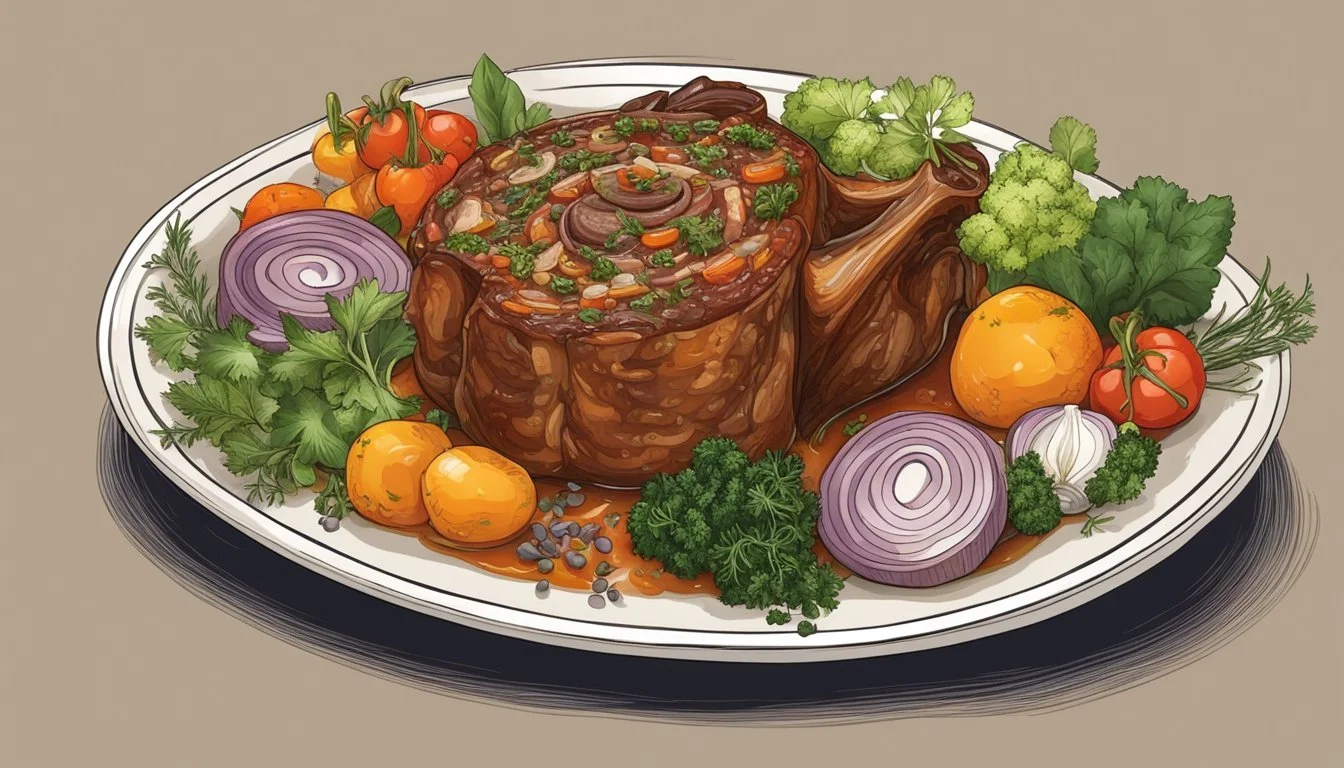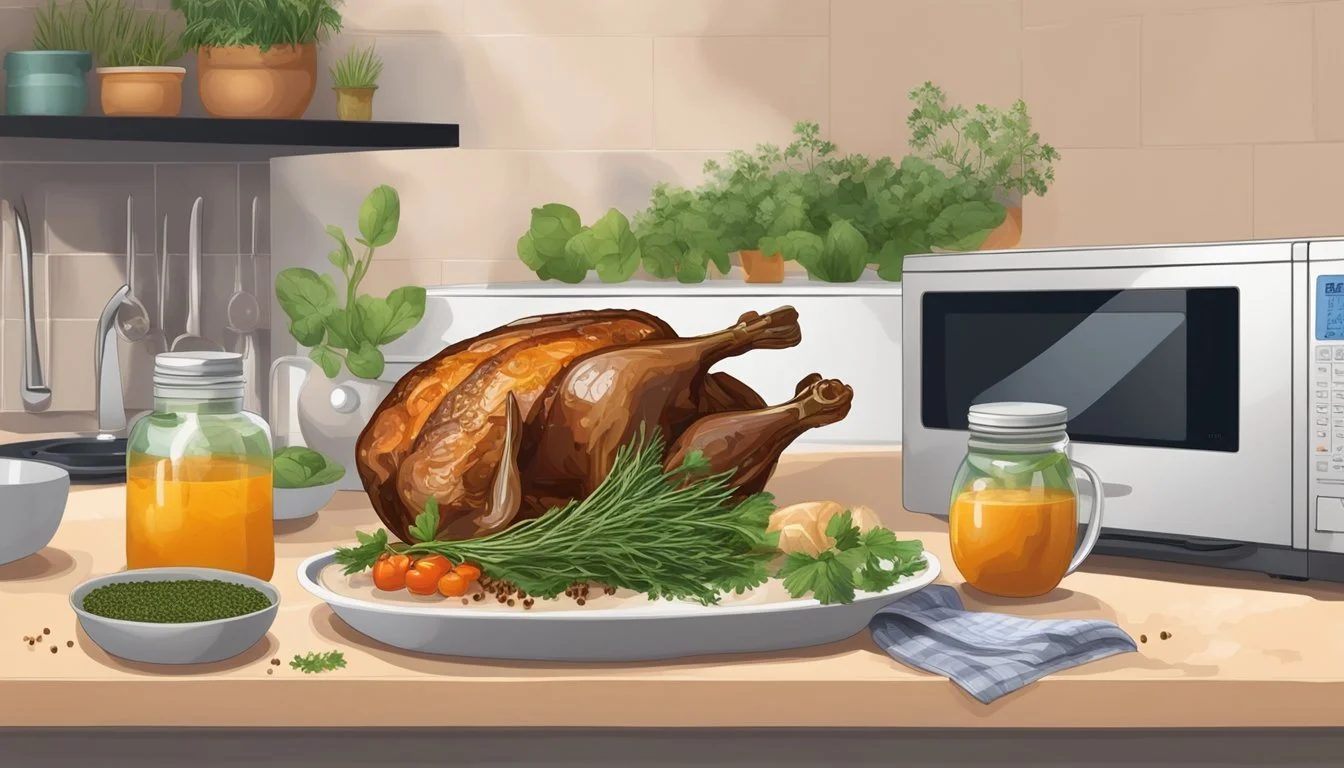Best Way to Reheat Osso Buco
Ensuring Tenderness and Flavor Retention
Osso buco, the classic Italian dish, has delighted palates for generations. This hearty entree, traditionally prepared with veal shanks, is beloved for its tender meat and rich flavors. The succulent shanks are braised for hours in a savory broth infused with wine, vegetables, and herbs until the meat is fall-off-the-bone tender. Achieving that perfect balance of melt-in-your-mouth texture and depth of flavor is an art and retaining these characteristics when reheating leftovers is a crucial aspect of enjoying this dish a second time around.
Reheating osso buco demands a method that respects the integrity of the meat and the harmony of its flavors. Warming this dish properly ensures that the veal remains tender and that the complex layering of aromatics and seasonings isn't compromised. Subtlety is key; a gentle and patient reheating process allows the meat to absorb the juices, reactivating the full-bodied profile of the sauce. The aim is to restore the osso buco to a state that mirrors its initial, sumptuous post-braise perfection.
The best approach to reheat osso buco uses low heat and includes the addition of moisture to prevent the meat from drying out. It is crucial to slowly bring the meat to temperature in a manner that maintains its moisture and tenderness. Liquid, such as a bit of broth or wine, is an essential component when reheating, providing the meat with the necessary hydration, complementing the richness of the sauce, and ensuring the dish remains an exemplary example of Italian culinary excellence.
Understanding Osso Buco
Osso Buco is a renowned Italian dish that exemplifies the art of slow cooking, transforming simple ingredients into a rich and tender meat experience. The name translates to "bone with a hole," an apt description for the marrow-filled shank at its center.
Origins and Popularity
Italian Heritage: This classic dish hails from Milan, a testament to the region’s love for hearty and flavor-rich stews. Its popularity has soared beyond borders, making it a staple in fine dining establishments and home kitchens worldwide.
Key Ingredients
Selecting the Shank: Traditionally, osso buco is made using the cross-cut veal shank, prized for its balance of meat and marrow. However, variations with pork or lamb shanks have also found their way into the heart of the recipe, catering to diverse palates and availability.
Vegetables: A base of aromatic vegetables, typically carrot, celery, and onion, is finely chopped to lay the flavor foundation.
Braising Liquids: White wine and broth combine to create a simmering bath that infuses the meat with moisture and taste.
Tomato Element: A dollop of tomato paste enriches the sauce with umami and subtle acidity.
Herbaceous Accent: A gremolata, consisting of garlic, lemon zest, and parsley, often accompanies the dish, complimenting the succulent shanks with a burst of freshness.
Preparation Techniques
The preparation of Osso Buco is crucial to achieving the dish’s signature tenderness and deep flavor profile. The two main methods to consider are following a traditional recipe and exploring cooking variations, each offering different textures and nuances to the dish.
Traditional Osso Buco Recipe
In a classic recipe for Osso Buco, veal shanks are the protein of choice for their rich taste and gelatinous content, which contribute to the dish's mouthfeel. The shanks are first seasoned with salt and pepper, then dusted with flour, which helps thicken the sauce during cooking. Braising is the cooking method used; it involves cooking the shanks slowly in a liquid, typically a combination of white wine and a rich stock, along with a traditional mirepoix of onions, carrots, and celery. The addition of herbs such as thyme, rosemary, and a bay leaf infuses aromatic Italian flavors into the meat. The dish is often garnished with Italian parsley before serving.
Equipment: A heavy Dutch oven is most commonly used for its heat retention properties and ability to cook the meat evenly.
Cooking Time: The shanks are slow-cooked in the oven, which allows the sinews within the veal to break down properly, resulting in tender meat.
Cooking Variations
While veal is traditional for Osso Buco, alternate meats such as beef, pork, or lamb shanks may also be used. Each meat brings a unique flavor and may require slight adjustments in cooking time.
Oven: Braising in an oven provides consistent heat and allows the meat to cook uniformly.
Dutch Oven: Retains heat well and is versatile for both stovetop and oven use.
Slow Cooker: An alternative for those seeking convenience, a slow cooker can be used to braise the meat over a longer period, ensuring the shanks become succulent.
Regardless of variations, maintaining a low cooking temperature is critical to prevent toughening of the meat. The addition of flour and wine to the recipe remains constant, aiding in the development of a velvety, flavorful sauce that complements the braised veal shanks.
Reheating Fundamentals
When it comes to reheating osso buco, the focus should be on preserving its savory richness while ensuring that it is heated safely and thoroughly. Proper storage prior to reheating is crucial, as is the method you choose to bring the dish back to its most enjoyable state.
Safety and Storage
One must store osso buco leftovers properly to maintain their quality and safety. If one plans to refrigerate their osso buco, they should do so within two hours of cooking:
Refrigerate: Place osso buco in an airtight container and refrigerate for up to 3-4 days.
Freeze: For longer storage, wrap osso buco in foil or freezer-wrap and freeze for up to 4 months.
Prior to reheating, if the osso buco is frozen, it should be thawed safely in the refrigerator. One should never thaw meat at room temperature as it can encourage bacterial growth.
Pre-Reheating Preparation
Before reheating, one should prepare the osso buco to ensure even warming without drying it out. Here are the preparation steps:
Thaw: If frozen, thaw the osso buco in the refrigerator overnight.
Portion: Cutting larger pieces into smaller portions can promote even heating.
Liquid Addition: Add a little broth or wine before reheating to maintain moisture.
Cover: Use a lid or foil to cover the dish during the reheating process, which helps retain moisture.
To accompany reheated osso buco, one might prepare sides such as mashed potatoes, polenta, or risotto to complement the meat's rich flavor. Following these instructions ensures not just safety and nutrition preservation but also the enjoyment of the dish's flavors and textures upon serving.
Reheating Methods Explained
When reheating osso buco, maintaining the meat's tenderness and flavor is paramount. Specific techniques on the oven and stovetop, as well as alternative methods, offer effective ways to achieve this goal.
Oven Reheating
Temperature and Time: Preheat the oven to a low temperature, around 325°F (163°C), to reheat osso buco gradually and maintain its moisture.
Covering: Place the osso buco in an oven-safe dish and cover it with foil. This helps to retain moisture and create steam that assists in even reheating.
Additional Moisture: Adding a bit of broth or stock can prevent the meat from drying out.
Stovetop Reheating
Gentle Heat: Use a saucepan on the stove over low heat. It's crucial to avoid high heat that can toughen the meat.
Liquid Addition: A splash of broth or wine can be added to enhance the flavor and prevent sticking.
Stirring: Occasional stirring helps in even heating and prevents the bottom from burning.
Alternative Methods
Slow Cooker: For reheating without close monitoring, a slow cooker on a low setting is suitable. Include enough liquid to avoid drying and set the lid to contain moisture.
Dutch Oven: This heavy pot distributes heat evenly, making it ideal for reheating osso buco on either the stove or in the oven. It retains heat well and keeps the meat moist when used with the lid on.
Maintaining Quality and Flavor
When reheating Osso Buco, the dish's rich flavor profile and tender veal shanks are paramount. Preserving these elements requires careful attention to the reheating technique used, ensuring the meat stays succulent and the sauce's tastes are enhanced rather than diminished.
The Role of Sauces and Liquids
Reheating Osso Buco in a saucepan with its original tomato-based sauce not only protects the veal from drying out but also allows the flavors to meld together even further. If the sauce has thickened or reduced, a cook should introduce additional broth or wine—the same type used in the initial cooking process—to maintain moisture and enrich the sauce's depth. Employing a gentle heat allows the braised meat to warm up evenly without the threat of toughening, ensuring the veal shanks preserve their tenderness.
Accompaniments and Sides
Serving Osso Buco with the right sides can elevate the dish and complement its robust Italian flavors. Traditionally, one may opt for a hefty scoop of cream polenta or risotto, providing a creamy texture contrast to the meat's richness. Mashed potatoes serve a similar purpose, acting as a velvety canvas to the complex flavor profile of the osso buco. Each portion of osso buco should be topped with a fresh gremolata, a zesty garnish typically made with minced parsley, grated lemon zest, and garlic, which cuts through the richness and invigorates the palate.
Presentation and Garnishing Techniques
When presenting osso buco, one aims to highlight the rich and tender veal shanks with thoughtful plating and garnishing that complements the Italian classic. The visually appealing arrangement and carefully chosen garnishes can greatly enhance the overall dining experience.
Plating Osso Buco
To begin plating osso buco, place a serving of creamy polenta or creamy risotto in the center of a warm plate as a base, which not only complements the veal’s flavors but also absorbs the savory sauce of the dish. Carefully position the veal shank atop the bed of polenta or risotto, ensuring the meat's beautiful sear is visible and the bone marrow remains intact. Should the sauce be generous, spoon it around the shank, allowing it to pool elegantly on the plate, highlighting the vibrant color of the tomatoes and the richness of the sauce without overwhelming the veal.
Garnishes and Final Touches
The final touches involve garnishing, which should not only add visual appeal but also complement the flavors of the veal shanks. Sprinkle lemon zest over the meat to inject a fresh, citrusy aroma that cuts through the richness. Add a sprig of fresh herbs like rosemary or thyme to introduce an aromatic component. If serving osso buco with vegetables, they should be neatly placed on the plate, or alternatively, a side of crusty bread can be provided to complement the dish and assist with savoring the sauce. Remember, the key is subtlety – garnishes should enhance, not overpower, the hero of the plate: the osso buco.
Osso Buco Variations
Osso Buco, a classic Milanese dish traditionally made with veal shanks, has garnered acclaim for its rich flavor and tender meat. Chefs and home cooks alike have introduced variations, using different meats and sauces to create new and exciting versions of the dish.
Pork and Lamb Alternatives
The quintessential osso buco uses veal shanks, prized for their flavor profile and the sought-after bone marrow. However, for those seeking alternative meat options, both pork and lamb shanks provide excellent substitutes. Pork shanks can lend a slightly sweeter taste and are usually more readily available. Lamb shanks, on the other hand, introduce a robust and gamey flavor that can be a delightful contrast to the more delicate veal.
Meat Type Cooking Time Adjustments Flavor Note Marrow Yield Veal Standard Delicate High Pork May require less time Sweet Medium Lamb May require more time Robust Low
Sauce and Broth Variations
While the traditional osso buco sauce is often tomato-based, complemented with a dry white wine reduction, sauce variations are plentiful. Red wine can be used instead, introducing a deeper, richer sauce color and an intense flavor. For a lighter variation, chefs might opt for lemon or a simple broth as the braising liquid, drawing inspiration from dishes like chicken piccata.
Cooking liquids often include a mixture of beef broth, chicken stock, or vegetables like carrots, celery, and onion. The key is to balance the braising liquid's savoriness with the natural flavors of the chosen meat. Adding pancetta, rosemary, and black pepper can enhance the sauce’s complexity. One must remember not to overpower the intrinsic flavors of the bone marrow, which is the signature component of the dish.
Tomato-based: Works well with any meat variation; enhances the umami flavor.
Wine-based:
Red wine: Pairs exceptionally with beef and lends depth.
White wine: Keeps the dish light; excellent for veal or chicken.
Broth-based: A versatile option; can be tailored to complement the main meat's flavor.
Herbs and Aromatics: Rosemary, black pepper, carrot, celery, and onion are commonly used to infuse the sauce with aromatic complexity.
Nutritional Information
Osso buco, traditionally made with veal shanks, is considered both a rich and hearty dish. This section provides insights into the caloric content and potential health benefits associated with this comfort food.
Caloric Content
A typical serving of Osso Buco contains an average of 569 calories. The dish's richness comes in part from the bone marrow found within the veal shanks, adding depth to the flavor. The calorie breakdown is often as follows:
Total Fat: Approximately 29g
Saturated Fat: Around 4g
It's important to note that the caloric value can vary based on cooking methods and additional ingredients such as garnishes or increased amounts of salty components.
Health Benefits
Although Osso Buco is known for its indulgent qualities, it still offers nutritional value. Veal shanks, the primary ingredient, are a source of high-quality protein necessary for muscle maintenance and repair. Moreover, the marrow within the shanks can offer vitamins and minerals, although it's a part of the dish consumed in moderation due to its rich nature.
Osso Buco is often served with a side of vegetables or garnished with gremolata, which can enhance the dish's overall nutrition profile by adding fiber and essential nutrients. When enjoyed as part of a balanced diet, Osso Buco can be incorporated into a healthy eating plan.
Conclusion
When reheating osso buco, maintaining the quality of this traditional Italian dish is crucial. The aim is to achieve a tender result, imbued with the rich flavors that osso buco is celebrated for. Adhering to the proper techniques can ensure that the reheated veal shanks are just as satisfying as when they were first prepared.
Expert tips for reheating osso buco include:
Gradual heating: Place the osso buco in a saucepan over a low heat. This prevents overcooking and ensures the meat reheats evenly.
Moisture is key: Adding a bit of broth, wine, or water helps maintain the dish’s signature tenderness and taste.
Stirring: Occasionally stir the osso buco to distribute the heat and incorporated liquids.
Instructions should be followed methodically:
Transfer the osso buco to a suitable saucepan.
Add liquid: A splash of broth or wine will keep the meat moist.
Low heat: Simmer on a low setting, covering the pan to create an even, gentle reheating environment.
Time: Heat until the veal shanks are warmed thoroughly, typically around 10-15 minutes.
To serve, one may prepare a suitable side dish—risotto or polenta being classic pairings. Also, consider a fresh garnish, such as chopped parsley, to elevate the presentation and to add a fresh note to the rich, succulent profile of the dish.
In conclusion, following these guidelines will help to ensure that the reheated osso buco is as delightful as it was when it was freshly cooked.







